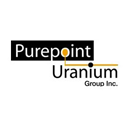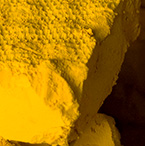Why Junior Mining Companies Rarely Spend Investor Money Wisely
.jpg)
Choosing the right junior mining stocks requires carefully evaluating management teams' track records, incentives, and spending based on a deep dive into company filings.
- On average, about a third of money raised by junior exploration companies is spent on overhead rather than drilling/exploration work
- It typically costs around C$1 million and takes +6 months just to take a junior exploration company public
- Many junior company CEOs lack capital markets experience and make poor decisions on spending for investor relations and marketing
- A lot of key information on company spending, management compensation, insider ownership, etc. is available in financial statements, MD&A, SEDAR, and SEDI filings but often overlooked by investors
- Evaluating management track records and incentives is crucial when investing in junior explorers to identify companies likely to be poor allocators of capital
Junior exploration companies play a crucial role in the mining industry, driving new mineral discoveries that sustain the project pipelines of major producers. However, these companies also have a reputation for burning through cash at alarming rates, often failing to generate returns for investors. Examining the spending behavior of junior explorers, and the underlying reasons behind it, is important for any resource investor looking to pick winners in this high-risk, high-reward space.
High Overhead Costs
One of the key issues highlighted by industry veteran Chris Frostad is the high proportion of raised funds that go towards overhead costs rather than into the ground on exploration work. On average, over a third of the money a junior company raises is spent on corporate expenses rather than drilling.
What the data shows is that more than a third of the money that's raised - doesn't go in the ground.
According to Frostad's analysis of around 20 uranium juniors, average annual overhead runs at about $1 million per company, separate from direct project and exploration costs. While some level of overhead is unavoidable, especially for public companies facing extensive reporting and compliance requirements, exploration-stage companies should still operate with a lean "startup mentality" and scrutinize every dollar spent.
The High Cost of Going Public
Part of the reason for high overhead is the significant expense involved in taking a junior exploration company public in the first place. Frostad estimates this process costs at least $1 million and usually takes over 6 months, requiring extensive work from lawyers, accountants, and auditors in every operating jurisdiction.
While going public is often the default path to raise capital, it saddles companies with ongoing costs and disclosure requirements that can be highly distracting for management teams, especially in the exploration phase where time and money are better spent in the field making discoveries. Alternative options like RTO'ing into a pre-existing shell company offer a quicker and cheaper route to a public listing, but come with their own risks around inheriting existing shareholders and legacy issues.
Lack of Capital Markets Experience
Many junior company CEOs and management teams come from technical backgrounds and lack experience operating in the public markets. As a result, they often make poor decisions when it comes to allocating money for investor relations, marketing, and stock promotion.
Frostad notes he regularly sees juniors, usually in a moment of panic or desperation about their share price, sign expensive contracts with multiple investor relations firms without much clarity on what they are getting for their money. Given the challenges juniors already face in getting their story out to investors, it's an area where inept or excessive spending can quickly add up.
It's also an area ripe for abuse, with Frostad citing examples of company executives spending lavishly on meals, entertainment and travel that have little to do with advancing the company's actual exploration projects. Even if the sums involved are relatively small, it's indicative of a problematic underlying mentality.
Chris Frostad, CEO of Purepoint Uranium
The Reality of Public Market Entrepreneurship
Many junior exploration executives default to public market funding without committing significant personal capital. This creates a fundamental misalignment with true entrepreneurship principles.
While these executives often claim to be entrepreneurs, few put substantial personal funds at risk. Most rely primarily on raising public capital and taking salaries rather than having significant "skin in the game." This approach stands in sharp contrast to private ventures where founders often invest personal savings or assets.
A critical issue often overlooked is the reality of board composition and oversight in junior companies. As discussed, many boards are effectively controlled by the CEO, who typically selects directors and committee members. This creates a situation where true independent oversight is limited. As Frostad notes, the common pattern is
The CEO comes up with an asset and says 'right let's put this thing together, hey buddy would you like to be chairman? You'll pick up a stipend for doing not a lot of work.
This governance structure can lead to poor oversight of spending decisions and lack of accountability.
The Evolution of Investor Relations
There’s been a dramatic change in investor relations over the past 10-15 years. As Frostad explains, traditional road shows and broker-dealer networks are no longer as effective or even permissible in many cases.
This has created new challenges in reaching retail investors and has led to companies experimenting with various digital marketing and social media approaches, often with mixed results. The pressure to maintain stock prices and attract investor attention has led many companies to overspend on multiple IR initiatives simultaneously, particularly when share prices are declining.
Digging Into Company Disclosures
While most investors focus primarily on company news releases and surface-level information, there is a wealth of detailed disclosure available for investors willing to dig deeper and do their homework.
Key sources include:
- Financial statements and MD&A (Management Discussion & Analysis) filed on SEDAR
- Circular mailings to shareholders ahead of annual meetings with details on executive/director compensation and ownership
- Insider trading reports filed on SEDI showing when management and large shareholders buy or sell stock
While dry reading, these documents often paint a much fuller and more nuanced picture of how a company operates than its own curated press releases and investor presentations. Comparing compensation and G&A costs to peer companies can highlight outliers with unusually high overhead. Tracking whether management is buying or selling stock, and on what terms, can offer clues about their true conviction level and incentives.
Evaluating Management Track Records
Ultimately, the best defense against junior companies that are poor allocators of capital is to study the track records of their management teams and directors. Information on an individual's history with other public companies is readily available through sources like SEDAR, SEDI and even a basic Google search.Junior mining is a fairly close-knit world, especially in epicenters like Vancouver.
If an management team has a history of jumping from one failed company to the next, leaving angry shareholders in their wake, it's often easy to spot. Similarly, teams who have successfully sold companies or projects in the past, and where management has their own money on the line through significant share ownership, are more likely to be strong operators and allocators of capital.
Picking the right management teams is critical for investors in junior exploration companies. In a sector where companies can go years without meaningful revenue, management has broad discretion over how to spend the funds they raise. Companies that fritter away money on excessive overhead and stock promotion are destined to destroy shareholder capital in the long run.
In contrast, those led by experienced, motivated teams with the prudence to spend carefully and focus their funds on drilling will have the best odds of making a meaningful discovery and generating the 10x or 100x returns that make up for all the losses elsewhere in an investor's junior portfolio. By diving deep into company disclosures and studying management's history, track record, and incentives, investors can tilt the odds of finding these winners in their favor.
Analyst's Notes




Subscribe to Our Channel
Stay Informed












































